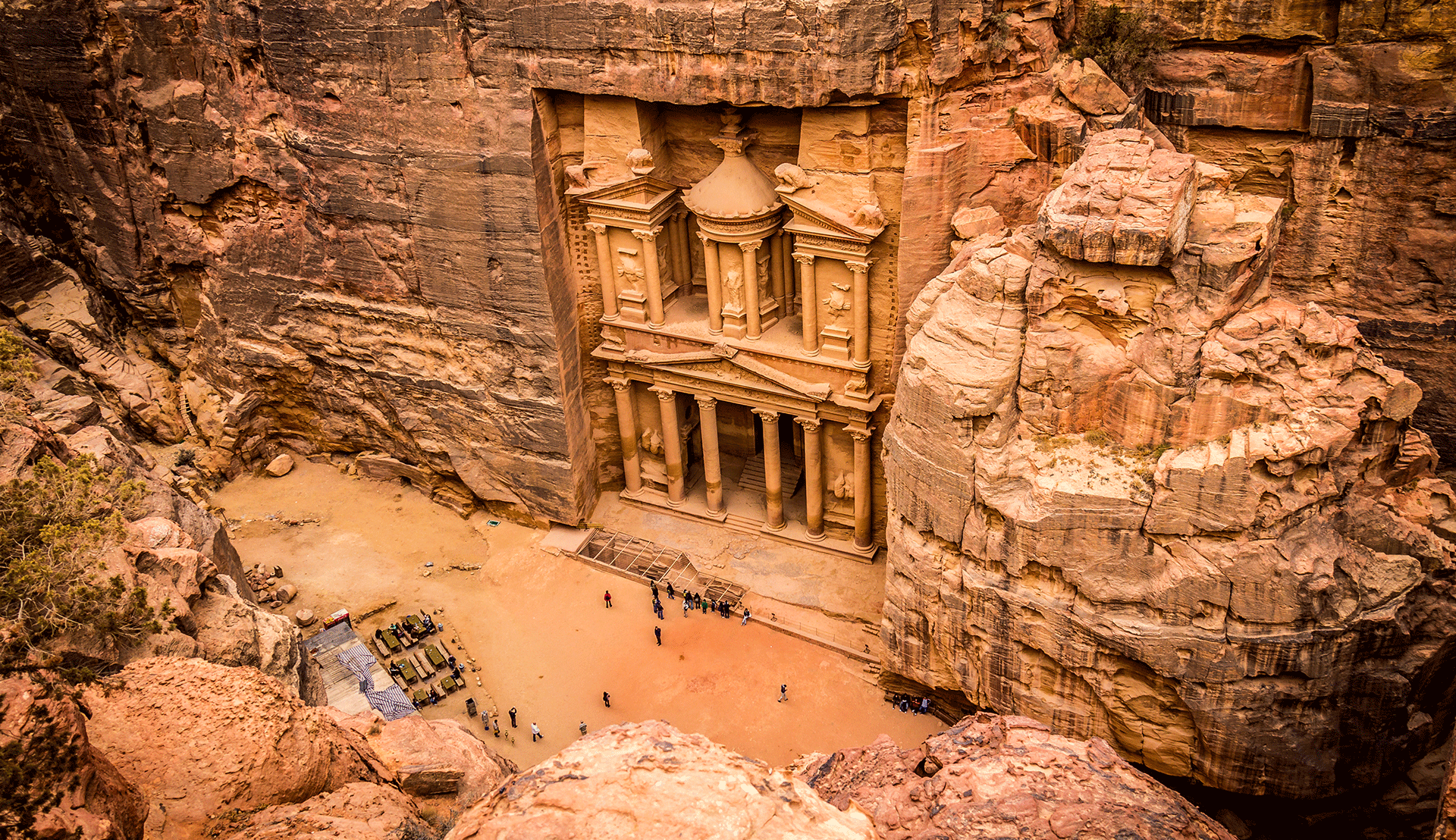Rutgers students and faculty can experience a virtual reality of ancient Petra at the Aresty Undergraduate Research Symposium on April 27.
If you’ve ever wanted to stroll the streets of Petra, Jordan, when Marcus Aurelius ruled the Roman Empire, you’re in luck.
Using maps, archeological data, and other scholarly and historical evidence, Sarolta Takács, history professor and director of the Modern Greek Studies Program at the School of Arts and Sciences, and a multidisciplinary team of students are building a virtual reality where users can literally experience a city annexed by one of the world’s largest empires in history.
“Where do you go to exchange money? Where do you shop? Where do you bring your camel to drink water?” Takács said. “Those are the questions we will answer.”
Though Petra is “very arid now,” Takács said, the city in the second century C.E. was “like an oasis,” and one of the things students can learn through her virtual reality is how water was redirected into cisterns and used for a variety of purposes. Eventually, Takács envisions using virtual reality to outline Petra’s role in a complex network of trade routes that brought spices, silk, and other luxury items from China and India to Rome.
As technology evolves, so will the project, Takács says, estimating that it could take about a decade before the project’s completion. Now in its third year of development, Takács has worked closely with her history students—and computer science students—to visualize and program the virtual reality.
Faith Hoatson is a French literature and medieval studies student working closely with Takács to research information, particularly visuals, to create the virtual reality.
“Throughout this process, I was almost amazed to discover how little we know about Petra. This is a civilization that flourished as a key trade city, with enough importance to be annexed by Rome,” she said.
Hoatson is working with computer science students Odalis Arias, Aviv Khavich, and Anuraag Shankar, who have joined the effort thanks to the Aresty Research Center, a division of Rutgers Undergraduate Academic Affairs that provides hands-on research and learning experiences for undergraduates.
“The Aresty program has been amazing,” said Takács. “This is a major undertaking—and it’s a challenge,” adding that setbacks such as a corrupted drive and data loss have slowed the project, but the students have helped to get it back to speed by moving the program materials to the cloud.
The marriage of scholastic creativity to the technology that brings the virtual reality to life comes through a gaming engine aptly named “Unity.”
Shankar says Unity—the same gaming engine used for popular games such as Angry Birds 2—allows programmers to import 3D models as objects that can be manipulated to create a scene; however, it’s not as simple as copying some files to create the scene.
“In order to create the virtual map, we use data from textbooks and research other teams. Then, we use Blender—a 3D creation suite—to create different models for the buildings in Unity. Finally, those models are placed on the virtual map in Unity,” Shankar said.
Together, the students are creating an animated guide—using a narrative written by Hoatson—that directs users through the virtual reality to provide useful information about the structures they see. To create the guide, Shankar says that they are using the C# programming language, a standard source code that allows objects to display multiple characteristics.
The project doesn’t end just because the semester does. Takács is seeking to take on a new group of Aresty undergraduates in the fall to continue the programming and implementation of the project.
She says that the team is looking to continue using Blender in the next iteration of the program.
Students and faculty who wish to experience the virtual reality of ancient Petra can do so at the Rutgers Aresty Undergraduate Research Symposium on April 27, 2018, at the Livingston Student Center.
Takács says she hopes that the symposium will encourage more students to join the project.
“We are currently looking for programmers and graphic designers skilled in Blender to join the project,” Takács said. Interested volunteers can contact her at stakacs@global.rutgers.edu.

